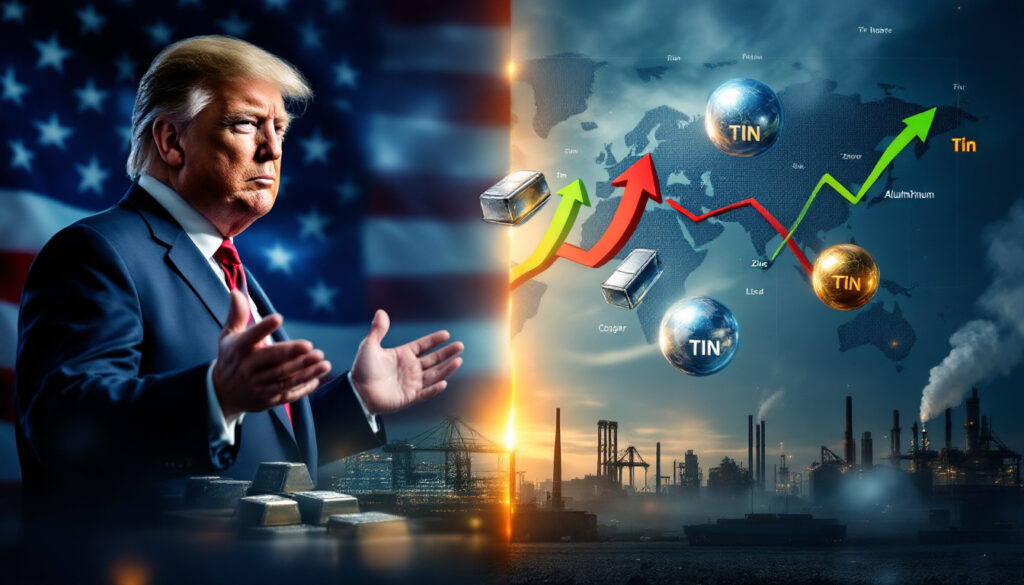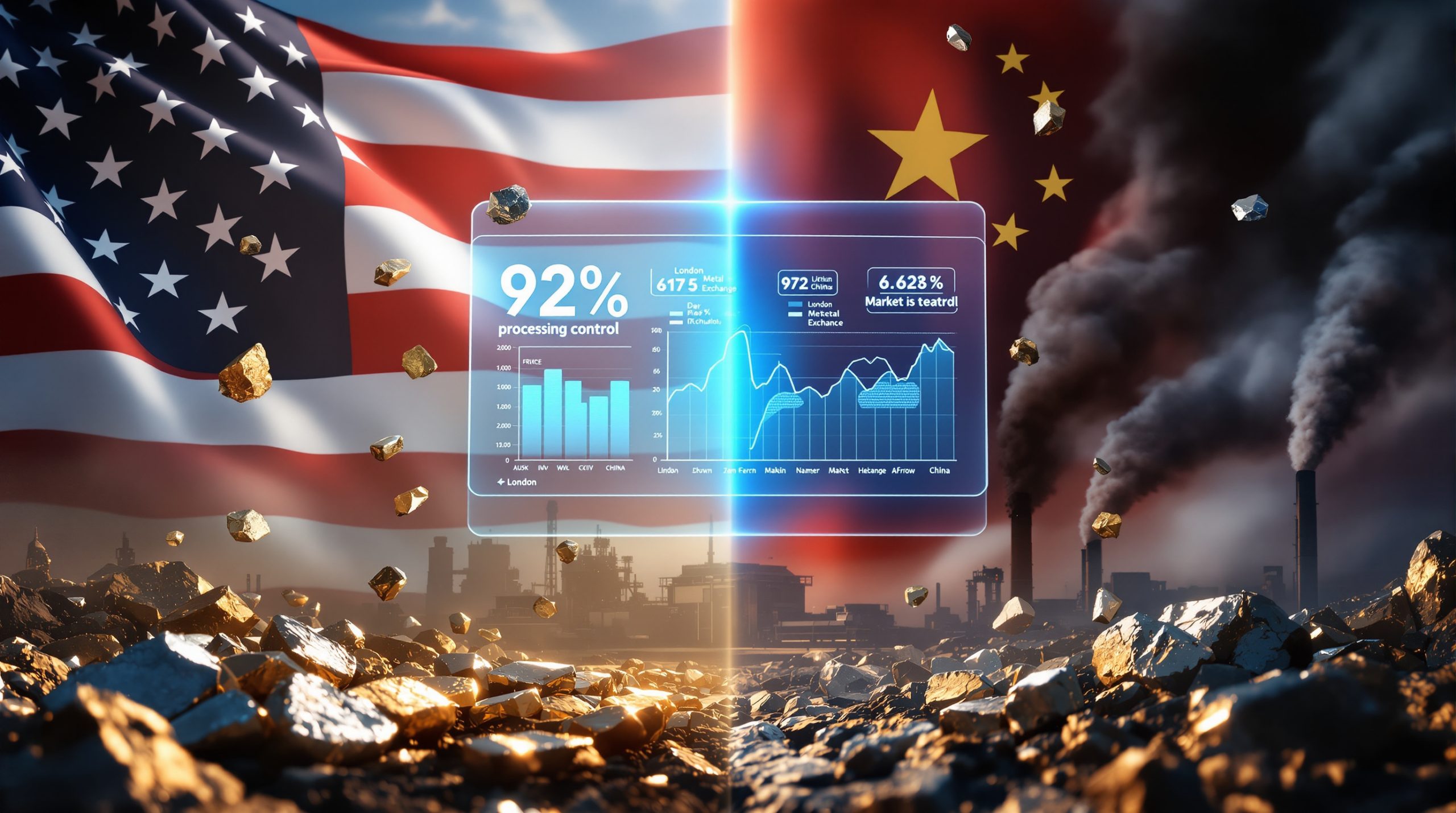How Have Trump's Tariffs Impacted Global Metal Markets?
The recent imposition of 25% tariffs on U.S. aluminum imports by the Trump administration has triggered significant disruptions across global metal markets, with the London Metal Exchange (LME) base metals index plunging 6% amid escalating trade tensions. Tin emerges as a notable exception, surging 25% in Q1 2025 due to supply shocks unrelated to tariffs, while copper and aluminum face unprecedented pricing dislocations. This report analyzes these dynamics, grounding findings in quantitative market data, expert insights, and technical supply-chain mechanisms.
The Trump administration's tariff policies have created immediate distortions in metal pricing and trade flows. The aluminum market exemplifies this disruption, with the U.S. Midwest premium spiking to $900/ton above LME base prices following the tariff increase from 10% to 25%. European premiums concurrently fell 18% as traders rerouted metal away from U.S. customs zones. These regional disparities reflect the market's rapid response to anticipated trade barriers, underscoring aluminum's sensitivity to how Trump's policies are reshaping global commodity markets.
The Aluminum Premium Distortion
The CME aluminum contract's structure—mirroring the LME's global benchmark—has amplified regional premium volatility. Analysts initially projected aluminum to outperform in 2025 due to energy-cost-driven production cuts in Europe, but tariff-induced inventory repositioning has overshadowed these fundamentals. For instance, LME aluminum stocks in Rotterdam warehouses declined 22% in March 2025 as traders prioritized U.S.-bound shipments. This physical reshuffling illustrates how protectionist measures can override traditional supply-demand equilibria.
Copper's Transatlantic Pricing Disconnect
Copper markets entered uncharted territory following February 2025's national security investigation into U.S. imports. The CME-LME copper spread reached a record $1,200/ton as manufacturers rushed to secure pre-tariff inventory, triggering a 340,000-ton metal migration to U.S. ports. However, LME three-month copper subsequently collapsed below $9,000/ton as China's 34% retaliatory levy on U.S. goods dampened global commodities market insights and political dynamics. This paradox—short-term physical scarcity juxtaposed with long-term demand destruction—highlights metals' complex role as both economic inputs and trade war casualties.
Why Is Tin Outperforming All Other Metals?
Tin's 25% Q1 2025 gain defies the broader metals downturn, driven by coinciding supply shocks rather than tariff effects. The closure of Alphamin Resources' Bisie mine (Democratic Republic of Congo) removed 4% of global tin concentrate supply, while a 7.8-magnitude earthquake in Myanmar delayed Man Maw mine's restart by at least 9 months. These disruptions tightened physical markets just as LME inventories hit a 15-month low of 3,450 tons in March 2025.
Supply Shocks Creating Tin's Roller-Coaster Ride
The Bisie closure exemplifies tin's concentrated supply chain risks—the Congolese facility accounted for 85% of Alphamin's revenue and supplied critical low-impurity ore to electronics manufacturers. Concurrently, fund long positions reached 42,000 contracts, the highest since 2022's semiconductor shortage. This speculative fervor amplified price swings when the Myanmar earthquake damaged transportation infrastructure to Man Maw, which holds estimated reserves of 1.2 million tons.
China's Contrasting Tin Supply Situation
Despite global tightness, Shanghai Futures Exchange (SHFE) tin stocks surged 47% YTD to 9,872 tons. This divergence stems from China's strategic reserves release and increased recycling of solder scrap from electronics exports. Domestic refined tin production rose 8% in Q1 2025 as smelters capitalized on high prices, creating a buffer against international supply shocks. According to recent insights into copper smelting and market dynamics, similar patterns are emerging in other metal markets.
How Are Other Base Metals Performing Amid Tariff Turbulence?
Nickel's Indonesian Supply Challenge
Indonesia's nickel sector continues to flood markets, with LME stocks containing over 50% Chinese-processed Indonesian material versus 11% in early 2024. Despite prices languishing at $16,200/ton (below 78% of producers' cash costs), output grew 14% YTD as state-backed operators prioritized market share over margins. This glut has depressed smelter premiums to $80/ton, their lowest since 2020.
Lead's Heavy Stock Burden
LME lead inventories reached 331,000 tons in March 2025—15 times their 2023 levels—despite a 120,000-ton cancellation wave. This paradox reflects warehouse financing deals rather than genuine demand, with contango spreads incentivizing storage. Automotive battery demand growth of 3.8% has been insufficient to absorb surplus from recycled lead supplies, which account for 60% of Western production.
Zinc's Underperformance and Mine Supply Rebound
Zinc's 17% price decline since January contrasts with a 9% drop in LME stocks, exposing the market's focus on impending mine supply. The 2024 global zinc mine output drop of 2.8% is reversing as New Century Resources' Carpentaria restart and Vedanta's Gamsberg expansion add 450,000 tons/year capacity. Smelter treatment charges rebounded from -$15/ton to $35/ton, signaling concentrate surplus.
What Are The Global Trade War Implications For Metal Markets?
Reciprocal Tariff Reactions
China's rare earth export controls—a direct response to U.S. tariffs—have tightened dysprosium supplies critical for EVs, with prices jumping 32% in March. Meanwhile, copper's slide below $9,000/ton reflects dampened manufacturing PMIs, as the U.S.-EU-China triad accounts for 62% of global copper demand. Even gold market analysis for 2024–2025 shows a 2% decline despite its safe-haven status, illustrating broad risk-off sentiment.
Supply Chain Disruptions
The tariff scramble has accelerated physical metal flows, with 680,000 tons of aluminum and copper diverted from Asia to North American ports in Q1. This logistical reshuffling has increased transatlantic shipping costs by 40%, while warehouse operators report 92% occupancy rates at key hubs like New Orleans and Rotterdam. Navigating the geopolitics of battery metals and recycling challenges becomes increasingly complex as lithium carbonate prices fell 18% despite EV sales growth, with tariff uncertainty delaying cathode plant investments.
FAQ: Trump Tariffs and Metal Markets
How have Trump's tariffs specifically affected aluminum markets?
Trump's increase of aluminum import tariffs from 10% to 25% has created a record US Midwest premium of over $900 per ton above the LME basis price, while European premiums have declined as metal is diverted away from the US market. This has effectively created a two-tier global pricing system, with US consumers paying significantly more than their international counterparts. As reported by CFR analysis, these tariffs are reshaping industry economics fundamentally.
Why is tin performing differently from other base metals?
Tin's exceptional performance (25% gain in Q1 2025) stems from supply disruptions unrelated to tariffs, including the Myanmar earthquake affecting the Man Maw mine and the closure of Congo's Bisie mine due to insurgency. These supply constraints coincided with low global inventories, creating a perfect storm for price appreciation despite broader market concerns.
What is happening with the copper market under tariff threats?
The threat of US copper tariffs has created a record premium for CME US customs-cleared copper over LME global prices, triggering a rush to move physical metal to the US before tariff implementation. This has resulted in a 340,000-ton migration of copper to American shores while overall prices have fallen below $9,000 per ton on global manufacturing concerns. According to Mining.com's analysis, these trends signal long-term market restructuring.
How is nickel being affected by Indonesian production?
Nickel prices remain constrained in the $15,000-17,000 per ton range due to Indonesian overproduction flooding the market. Chinese-processed Indonesian nickel now represents over 50% of LME warehouse stock, up from just 11% in early 2024. Despite operating below cash cost for many producers, state-backed Indonesian operations continue to prioritize market share over profitability.
What's driving zinc's underperformance in the metals market?
Despite falling exchange stocks, zinc has underperformed due to expectations of significantly increased mine supply in 2025 following a 2.8% production decline in 2024. Major mine restarts and expansions are projected to add 450,000 tons of annual capacity, coinciding with flat demand and weak construction sector outlook. The recovery of smelter treatment charges from negative territory to $35 per ton further signals a shift toward concentrate surplus.
Conclusion
The Trump tariffs have bifurcated metal markets into tariff-sensitive (aluminum/copper) and supply-constrained (tin) cohorts. While tin's supply shocks provide temporary insulation, its reliance on single-source mines leaves it vulnerable to future disruptions. The broader base metals complex remains hostage to trade policy volatility, with LME pricing mechanisms struggling to reconcile regional dislocations. Policymakers must weigh these market distortions against strategic objectives, as current tariff frameworks risk destabilizing the raw material foundations of global manufacturing.
Want to Stay Ahead of Critical Mineral Discoveries?
Don't miss the next major ASX mineral announcement that could transform your portfolio. Discovery Alert's proprietary Discovery IQ model provides real-time notifications of significant discoveries across all commodities, delivering actionable insights straight to your inbox. Begin your 30-day free trial today and position yourself ahead of the market.




